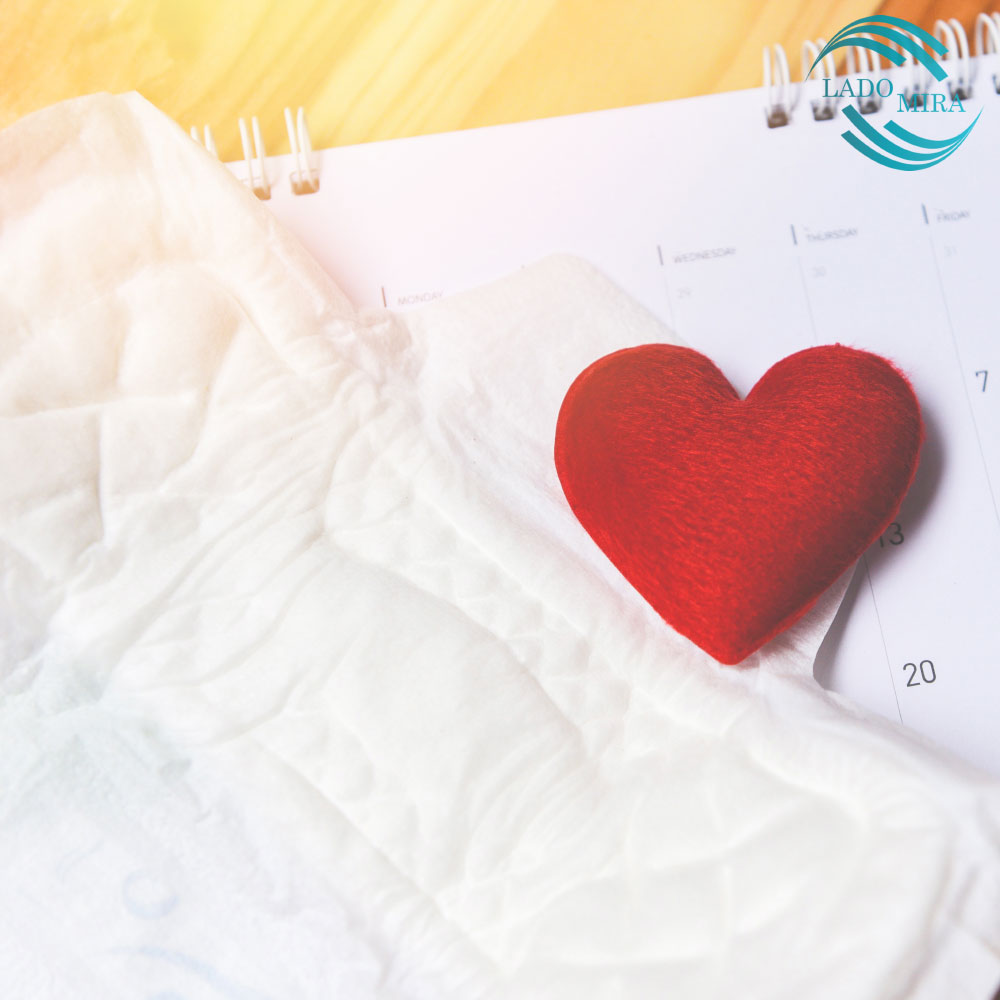Knowing about the use of various types of sanitary napkins helps women a lot in managing menstruation. Each of these models with its own characteristics, especially in the amount of blood absorption, gives women the feeling of peace, comfort and confidence. This article examines the types of sanitary napkins, ingredients, production method, application, features, advantages and disadvantages.
Applications of various types of sanitary napkins:
Different models of sanitary napkins are designed for use by women at certain times according to the volume of menstrual bleeding or the absorption of secretions after childbirth and similar medical conditions during the day and night. These bandages often have protective layers that prevent blood leakage. The use of sanitary napkins includes:
- Daily sanitary napkins: This sanitary napkin model is designed for use during the day due to its lightness and comfort suitable for low to medium blood flow. These types of tapes contain a protective layer against blood leakage and secretions for long-term use.
- Night sanitary napkin: This sanitary napkin model is designed to prevent blood leakage while sleeping during the night with greater thickness and length and higher absorption power for women’s comfort and relaxation.
- Winged sanitary napkin: This sanitary napkin model has side fins that stick to the underwear to prevent the movement of the strip. This feature reduces blood leakage and makes women feel more confident.
- Sanitary napkins without wings: This sanitary napkin model is suitable for the daily routine use of women who have a normal and less bleeding volume.
- Regular and scented sanitary napkins: Most of the sanitary napkins are ordinary, but some of them are marketed with aromatic scents to reduce the unpleasant smell of blood. It should be noted that some people may be allergic to these scents.
How to produce sanitary napkins:
The production of these products has various and complex steps due to the use of various types of sanitary napkins, the first step of which is the selection of quality materials. The production process includes:
- Selection of raw materials: The main material used in the production of sanitary napkins is synthetic fibers, including polyethylene and polypropylene, for the absorbing layer of cellulose material and for holding different layers of adhesive materials.
- Making layers: Sanitary napkins are often made up of several layers, each of which has a specific task. The protective layer prevents leakage of menstrual blood. The middle layer absorbs and stores blood completely. The upper layer should be non-allergenic and very soft due to direct contact with the skin.
- Cutting and assembly: After making different layers, it is time to cut and assemble sanitary tape according to standard sizes according to their application. At this stage, if the strips have fins, the cuts are done in the same way.
- Packaging: after cutting and preparation, the tapes are placed in a specified number in normal or folded (travel) form.
Sanitary napkin ingredients:
Sanitary napkins consist of several parts with different materials, which depends on the use of sanitary napkins. These materials include:
- Synthetic fibers: Most sanitary napkins are made of synthetic fibers such as polyethylene and polypropylene. These fibers make the blood softer and more absorbent during menstruation.
- Cellulose: The most important absorbent material in sanitary napkins is cellulose, which absorbs and stores secretions and blood.
- Absorbent polymers: Absorbent polymers are used in sanitary napkins to quickly absorb large amounts of liquids such as blood.
- Adhesive materials: To prevent the sanitary napkin from moving on the underwear while walking or while sleeping, adhesive materials are used to keep it fixed to the bottom layer of the underwear.
- Protective layer: To prevent leakage of secretions and blood, a protective layer, which is usually made of polyethylene, is used on the bottom layer of the sanitary napkin.
Features and benefits of sanitary napkins:
- Maintaining cleanliness and hygiene: using sanitary napkins absorbs women’s blood and secretions and prevents the spread of unpleasant odors.
- Protection against leakage: Sanitary napkins in various sizes and designs prevent blood leakage and provide more confidence to its users.
- Variety: Due to the use of sanitary napkins, the variety of these products gives women a higher power of choice based on their needs and preferences.
- Easy and convenient use: The convenience and ease of using sanitary napkins during changing allows women to do their daily activities without any worries during menstruation.
Disadvantages and challenges of sanitary napkins:
- The possibility of causing allergies: Some sanitary napkins that contain aromatic substances may cause allergies for people with sensitive skin.
- Discomfort: Some women may feel itching and discomfort when using some sanitary napkins due to their direct contact with the skin, in which case they can buy non-allergenic strips.
- Environmental waste: These products cause environmental waste due to the use of plastic layers to prevent blood leakage.
- The need for frequent replacement: Since sanitary napkins need to be changed regularly to maintain hygiene and prevent fluid and blood leakage, it is very challenging for women, especially when they do not have access to a toilet.
Finally, sanitary napkins are one of the essential hygiene products for women. Having enough information about the use of different types of sanitary napkins and their different characteristics will play an important role in managing menstruation. Choosing the right product can help women to go about their daily activities more calmly and confidently during menstruation. We suggest that you visit the Ladomira online store for a bulk order of these various products to expand your domestic and foreign business. Considering the importance of export, if you intend to market these products internationally, you can contact our commercial experts for more information.

